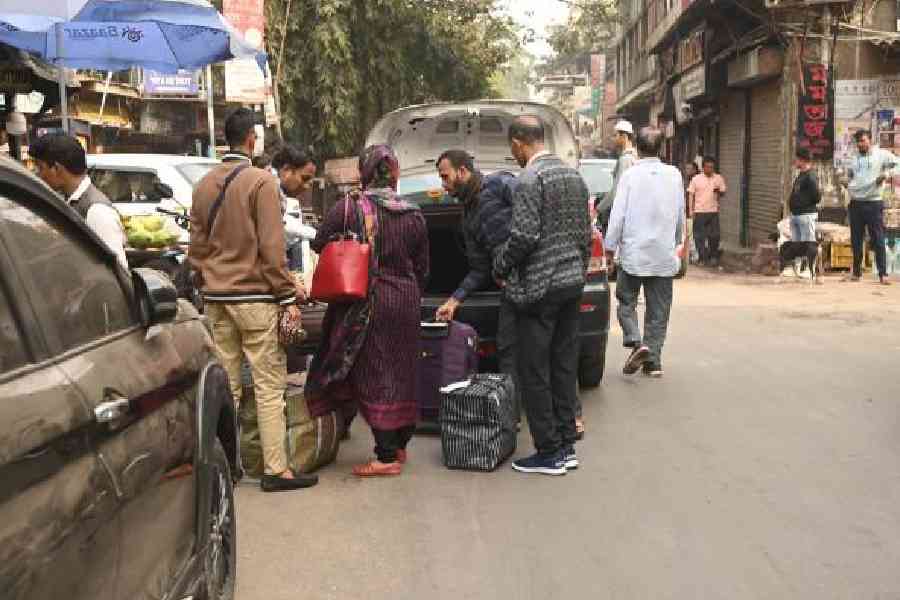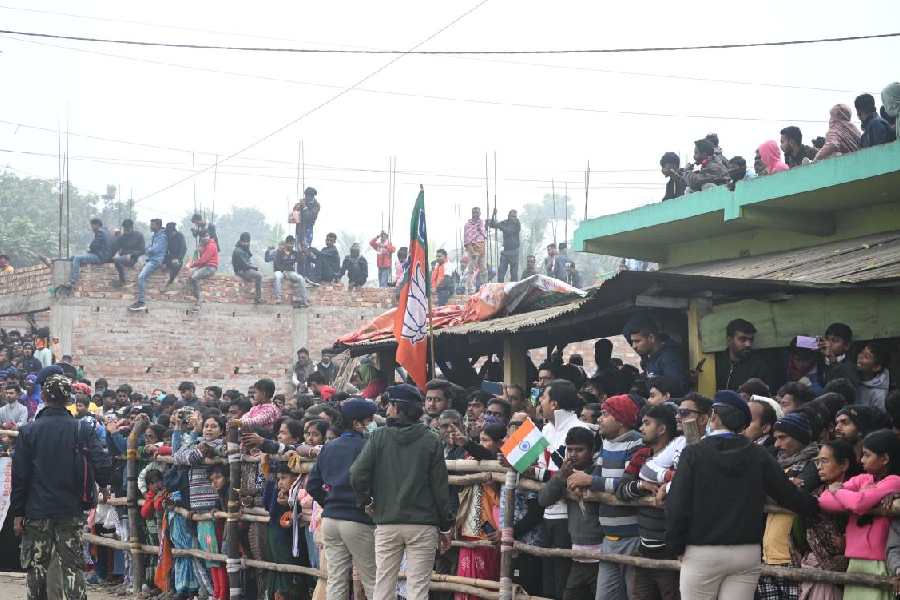 |
| An artisan works on a sindhora at Dumraon in Buxar. Telegraph picture |
Ecological concern is threatening to push a traditional cottage industry in Dumraon into oblivion. The delicate wooden sindhora or vermilion boxes from Dumraon, which have long been a mark of permanence in the lives of married women in Bihar and Uttar Pradesh, could soon disappear.
Laws banning timber trade, along with financial trouble and official neglect has pushed the cottage industry, which once flourished in the princely state of Dumraon in west Bihar, around 120km from Patna, to the edge of oblivion.
Rajiv Kumar Bhagat, a senior advocate and social activist in the district, told The Telegraph: “In the late 1980s, the governments of Uttar Pradesh and Bihar passed a number of laws banning timber trade in the area. This led to decline in the trade of making sindhoras.”
Sources said before the scarcity of raw material began to affect the industry, it used to flourish. Members of the Kharwaar community — who are now appealing for a Scheduled Tribe status in the state — were experts in the craft. “The industrial development department used to run a training centre at Tehri Bazaar in Dumraon in 1980 for sindhora makers. Trainees used to get Rs 75 as scholarship,” said Bhagat.
But now, very few are willing to join the traditional trade. The rising cost of mango wood — used to make the sindhoras — along with labour and power costs have crippled the cottage industry. Sources said many artisans and their families have abandoned their homes in Dumraon and migrated to other places in search of better jobs. Usha Devi, an artisan who imparts training to school and college girls free of cost to keep the tradition alive, told The Telegraph: “Many of us cannot make sindhoras anymore because of the rising cost of raw material.”
Recalling better days, Usha Devi said when she came to Dumraon from Varanasi in Uttar Pradesh after her marriage, her husband carved out a delicate sindhora for her. But when she tried her hand at the traditional craft with which her in-laws used to earn their bread, she found the going difficult. “Once I learnt the craft it became a good source of income, even after my husband, Mohan Kharwar, passed away,” said Usha.
Explaining why they use mango wood, the artisan said: “Besides being delicate enough to carve, they are also auspicious. A mango-wood sindhora ensures good relations between husband and wife.” Householders believe that the sindhora is a very important symbol of marriage. Hindu women use it to store vermilion powder, which they put on their forehead as a mark of their married status.
Shweta Rani, a resident of the Rajgir area in Dumraon, said: “According to tradition, the elder brother of the groom or a senior male member of his family is supposed to buy the vermilion box for the bride. My sister-in-law, who lives in Ara (headquarters of neighbouring Bhojpur district), told me about the vermilion boxes manufactured in Dumraon. They come in different shapes and sizes and are better than other sindhoras available in the market.” But they may not be available for two long. Ashok Kharwaar, another artisan, said: “The new generation is not interested to join the trade, as it is beset with many difficulties. But it could be revived with government aid.”
Local authorities, however, are not sure of what they can do to protect the industry. Buxar deputy development commissioner Kaushlendra Pathak claimed that the authorities had taken steps to improve the condition of artisans engaged in sindhora making. But he was not sure what those steps were.










